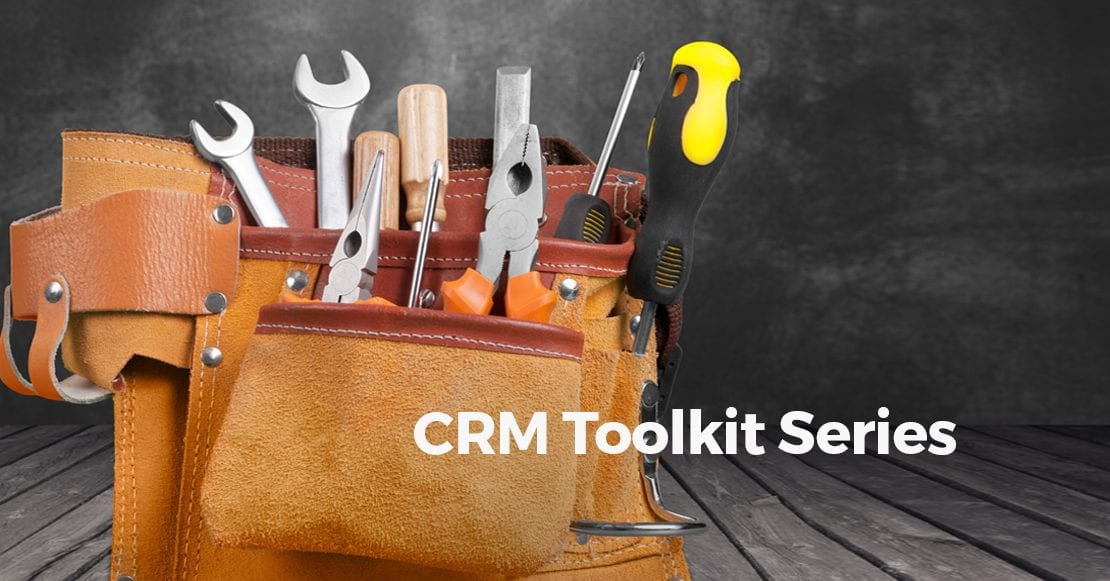Editor's Note: Redtail University 2020 is tool- and building-themed. In our CRM Toolkit Series 2020 we look forward to sharing some of the ways that you can use Redtail in your office to accomplish specific tasks or tackle common processes. Below, Hayley Mandrup, one of Redtail’s Subject Matter Experts, kicks this series off with an introductory piece about the importance of choosing your tools wisely, adopting them purposefully, and learning to use them well. Future posts in this series will tackle CRM-specific features and functions you can employ to make your everyday working lives easier and more productive.
When I was a kid, I frequently found myself on construction sites. My dad was a construction worker, and we didn’t have childcare, so I would either do homework or help him after school. As a novice user of tools, I found that by turning a hammer sideways I missed the nail less frequently because the greater surface area increased my odds of hitting the nail.
Still, I was using the tool wrong. I did not invest my time in practicing the right way and, as a result, the overall task went much slower than if I had invested time upfront in learning the tool’s proper function.
Working with advisory offices, I often see a few common misconceptions: “the tool provides all the answers”, “the tool increases efficiency”, “the tool creates collaboration”. When, in reality, the tool has the ability to provide the answers. The tool empowers office members to be efficient. The tool makes it easy to collaborate.
One thing that all the new softwares, tools, subscriptions, etc., don’t have that the people in your office hopefully do is motivation. So, ask yourself this; “Is my office effectively utilizing our existing tech solutions?” If the answer is no, start to evaluate if enough time and effort have been invested in teaching them 1) why they should be using a given tool, and 2) how to use it effectively.
As I was thinking about the above, I jotted down a quick list of the technologies I manually check or receive alerts from each morning prior to my workday even beginning:
- Work email on iPhone
- Personal email on Gmail
- Home to-do items in Todoist
- Twitter for work
- Personal Facebook
- The dog’s Instagram account (@RedtailMalcolm)
- Slack for work communication
- Redtail App for work calendar. (Or, our Retriever Cloud tool syncs the calendar to the native calendar on my phone as well)
- Adjust the Nest thermostat to turn the house on eco-mode for the day
- Check Ring for any alerts throughout the night
- Login to Mint for budget management
There are many more technologies I use throughout the day, and each provides organization and/or time management assistance. But, I didn’t wake up one day and download all these systems. They gradually ended up in my tech stack. And, each one went through an implementation phase before I could claim a symbiotic relationship with the tool.
LEAN INTO THE LEARNING CURVE
Technology shouldn’t be adopted for technology’s sake. The first principle when considering adoption of any technology should be assessing if it has the potential to address challenges that you are facing. After clearing that hurdle, a conscious decision to learn the tool’s capabilities and limitations is vital. Using a new piece of technology is the same as starting a new habit. Use a reminder system that already works for you to get started. This could be as commonplace as a sticky-note on the bottom of your computer monitor or a time-block on your calendar to dedicate to learning the system.
There will also likely be a transition phase – and this is okay! Every journey begins with one step, and accepting that there will be setbacks is all part of moving forward. With any project, break down the goals into measurables. The first goal is to learn the system, then add information to it and get comfortable within the technology. Then, make using it part of your every day, or part of a regular routine. Once this is done, begin to phase out the older process (if there was one).
CRM, like other technologies, is a tool. And, if the hammer is turned sideways, and nobody knows what they’re using it for anyway, you won’t reap the same rewards in terms of adoption or efficiency. So where should you start? First, if your office does not have a CRM, start comparing the industry options. If you have a CRM, evaluate whether it is currently meeting your needs. An important question to ask at this step: “Are any issues I am having with the tool itself, or rather that I am using the tool incorrectly?”. Training and help resources are available through most companies to help you accomplish your goals with their services. Redtail offers many avenues for assistance with Redtail CRM or our other industry solutions. After all, your success in using our platform translates to our success as well!
Over the course of our Redtail CRM Toolkit 2020 Series, we hope to be able to provide you with a ton of actionable insight into the many different ways that Redtail can help you address challenges in your business in 2020 and beyond.


